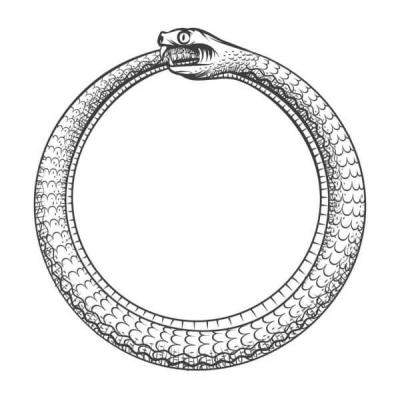
The course introduces students to the concept of participatory prototyping. It then focuses on the concept of probes, toolkits and prototypes and the general adoption of prototyping as a key feature of contemporary design methodologies. Students will learn how to use story telling techniques, visualization techniques and low fidelity multimodal prototyping techniques. Through functional prototypes they will learn how to communicate the value generated, the nature and characteristics of their design project and how to support the further involvement of users with specialized knowledge related to the most complex aspects of the service.
-
Students who successfully pass " Co-Design and service prototyping " will be able to:
• Select the appropriate prototyping techniques given the stage and nature of their design project.
• Plan and conduct co-design sessions as part of design projects.
• Build functional prototypes for documenting and validating design ideas and for conducting user research.
• Issue design feedback capable of guiding the next design cycle through participatory evaluation.
Stickdorn, M., Hormess, M. E., Lawrence, A., & Schneider, J. (2018). This is service design doing: applying service design thinking in the real world. " O'Reilly Media, Inc..
Sanders, L. (2012). Convivial Toolbox: Generative Research for the Front End of Design BIS Publishers, Amsterdam
Sanders, E. B. N., & Stappers, P. J. (2014). Probes, toolkits and prototypes: three approaches to making in codesigning. CoDesign, 10(1), 5-14.
Gaver, B., Dunne, T., & Pacenti, E. (1999). Design: cultural probes. interactions, 6(1), 21-29.
Redström, Johan. Making design theory. MIT Press, 2017.\
Manzini, E. (2015). Design, when everybody designs: An introduction to design for social innovation. MIT press.
Ehn, Pelle, Elisabet M. Nilsson, and Richard Topgaard (eds.). (2014). Making Futures: Marginal Notes on Innovation, Design, and Democracy. MIT Press. (340 p)
Jönsson, L., & Lenskjold, T. U. (2015). Stakes at the edge of participation: where words and things are the entirely serious title of a problem.Nordes,1(6)
Light, A., & Akama, Y. (2018). The nature of ‘obligation’ in doing design with communities: Participation, politics and care. Tricky Design:The Ethics of Things, 131.
Simonsen, Jesper and Robertson, Toni (eds.) (2013). International Handbook of Participatory Design. Routledge. (280 p)
Reitsma, L., Wessman, S., & Önnevall, E. (2017). ‘I Believe in That Version of the Future’. Cli-Fi and Design Fictions as Dialogical Frameworks for Expert Engagements.The Design Journal,
Kimmerer, R. W. (2013). Braiding sweetgrass: Indigenous wisdom, scientific knowledge and the teachings of plants. Milkweed Editions.
Binder, Thomas, The things we do: encountering the possible, book chapter in Smith, R. C., Vangkilde, K. T., Otto, T., Halse, J., Kjaersgaard, M. G., & Binder, T. (Eds.). (2016). Design Anthropological Futures. Bloomsbury Publishing.
Broms, L. 2021. 'Beyond Efficiency – Our Design Programme’. In Wangel, J. and Fauré, E. (Ed.) (2021). Beyond Efficiency: A speculative design research anthology in which we seek to deconstruct ecomodern imaginaries of urban sustainability through exploring what more just and sustainable living environments could be like. Bamberg: Spurbuchverlag, ISBN 978-3-88778-611-3
DiSalvo, C. (2020). The irony of drones for foraging: Exploring the work of speculative interventions. In Design anthropological futures (pp. 139-152). Routledge.
Hunt, J. (2011). Prototyping the social: temporality and speculative futures at the intersection of design and culture. In Design Anthropology (pp. 33-44). Springer, Vienna.
Jiménez, Alberto Corsín (2014) The prototype: more than many and less than one, Journal of Cultural Economy, 7:4, 381-398
Kannabiran, G., & Bødker, S. (2020, July). Prototypes as Objects of Desire. In Proceedings of the 2020 ACM Designing Interactive Systems Conference (pp. 1619-1631).
Kimbell, L., & Bailey, J. (2017). Prototyping and the new spirit of policy-making. CoDesign, 13(3), 214-226.
Koskinen, I., & Frens, J. (2017). Research Prototypes. Archives of Design Research, 30(3), 5-15.
Lenskjold, T. U., & Olander, S. (2020). Design anthropology as ontological exploration and inter-species engagement. In Design Anthropological Futures (pp. 249-265). Routledge.
Lim, Y. K., Stolterman, E., & Tenenberg, J. (2008). The anatomy of prototypes: Prototypes as filters, prototypes as manifestations of design ideas. ACM Transactions on Computer-Human Interaction (TOCHI), 15(2), 1-27.
Ravnløkke, Louise. Prototyping scales of knitwear design for sustainability. In Conference proceedings. Nordes Conference, 15.-18 August 2021, Kolding, Denmark.
Twigger Holroyd, A. (2021) Writing alternative fashion worlds: frustrations, fictions and imaginaries. Responsible Fashion Series, 14-22 October 2021, University of Antwerp/online.
Wensveen, S., & Matthews, B. (2014). Prototypes and prototyping in design research. In The routledge companion to design research (pp. 262-276). Routledge.
Westerlund, B., & Wetter-Edman, K. (2017). Dealing with wicked problems, in messy contexts, through prototyping. The Design Journal, 20(sup1), S886-S899.
Wilkie, A. (2014). Prototyping as event: designing the future of obesity. Journal of Cultural Economy, 7(4), 476-492.


